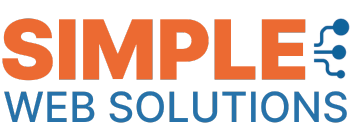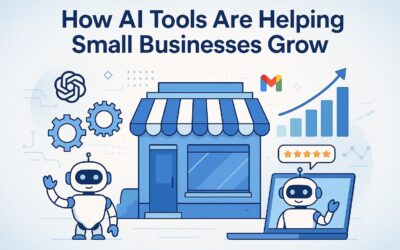Imagine reclaiming three full workdays monthly without hiring extra staff. Modern tools now enable service providers to automate repetitive work while maintaining personal touchpoints. This strategic shift goes beyond simple time-saving—it’s about redirecting human creativity toward growth opportunities.
Recent findings reveal a transformation underway. McKinsey’s 2024 research shows 63% of professionals reinvest saved time into client-facing activities after implementing automation. IBM forecasts that 9 in 10 companies will prioritize workflow digitization within two years, creating urgency for smaller operations to adapt.
Contrary to outdated assumptions, today’s solutions require no technical expertise. Service businesses automate appointment scheduling, payment reminders, and client onboarding through intuitive platforms. A local HVAC company might use automated dispatch systems to slash response times, while consultants could deploy AI-driven proposals to accelerate sales cycles.
The real advantage lies in scalability. Automated processes grow with your operation, eliminating bottlenecks during expansion phases. By systematizing routine work, owners gain capacity to nurture customer relationships and explore new markets—the core drivers of sustainable success.
Key Takeaways
- Strategic automation recovers 60+ hours monthly for small service businesses
- 92% of industry leaders plan workflow digitization by 2026
- Modern tools require minimal technical knowledge to implement
- Automated systems improve both efficiency and customer experiences
- Scalable solutions prevent operational growing pains
- Reallocated time fuels revenue-generating activities
Table of Contents
Introduction to Business Automation
Modern service providers are trading paper schedules for smart systems that handle repetitive work behind the scenes. This operational evolution allows teams to focus on skilled labor while technology manages predictable workflows.
The Shift from Manual to Automated Processes
Gone are the days when digitizing operations demanded expensive infrastructure. Cloud platforms now empower local contractors to streamline work without coding skills. A roofing company might replace spreadsheet-based estimates with template-driven software, cutting proposal creation from 45 minutes to 90 seconds.
Common concerns about job displacement often overlook automation’s true role. These tools excel at managing repetitive actions like appointment confirmations or payment tracking—freeing technicians for complex problem-solving. One HVAC operator reported 40% faster emergency response times after implementing automated dispatch alerts.
| Process | Manual Approach | Automated Solution | Time Saved |
|---|---|---|---|
| Client Onboarding | Email chains & paperwork | Digital forms with auto-reminders | 2.5 hours/week |
| Service Scheduling | Phone tag & calendar checks | Online booking with sync | 6 hours/week |
| Invoice Tracking | Spreadsheet updates | Payment portal integrations | 3 hours/week |
Adoption typically follows three phases:
- Identifying repetitive tasks (1-2 weeks)
- Testing single-process tools (3-4 weeks)
- Expanding successful systems (2+ months)
This phased approach helps tradespeople maintain service quality while upgrading operations. Platforms like Simple Web Solutions specialize in creating tailored transitions—ensuring human expertise remains central to customer interactions.
The Evolution of Business Automation in the Digital Age
Steam-powered looms in 18th-century textile mills marked automation’s first chapter. Today, intelligent systems handle complex decisions once reserved for human experts. This progression reshapes how service professionals optimize operations while maintaining personal client relationships.
From Mechanical Arms to Predictive Algorithms
Early factory machines replaced physical labor. Digital tools now replicate cognitive tasks. Cloud computing eliminated infrastructure barriers, letting electricians access enterprise-grade systems through web browsers. A 2024 Microsoft study found 70% of top corporations use AI assistants for routine communications.
Modern platforms learn from patterns rather than follow rigid rules. Machine learning analyzes historical service calls to predict roofing material needs before storms hit. HVAC contractors receive automatic dispatch suggestions based on technician locations and job complexity.
Simple Web Solutions bridges historical gaps with intuitive interfaces. Their tools help plumbers convert voice messages into work orders using natural language processing. Cloud-based systems reduced implementation costs by 83% compared to legacy software, making advanced capabilities accessible to local pros.
Current trends prioritize adaptability over complexity. AI-driven scheduling tools adjust to last-minute cancellations, while mobile apps sync field data across teams. These advancements empower tradespeople to focus on craftsmanship while technology handles logistical heavy lifting.
What Is Business Automation
Service professionals often juggle multiple tools that don’t communicate. Strategic automation bridges these gaps through three specialized approaches—each solving distinct operational challenges.
Business Process Automation: The Digital Conductor
Business process automation (BPA) acts like a symphony conductor for workflows. It connects separate systems to handle multi-step operations. A plumbing company might use BPA to automatically convert website inquiries into service tickets, dispatch technicians, and update inventory levels—all without manual input.
This approach shines for complex tasks requiring coordination across platforms. HVAC contractors report 30% faster response times when BPA routes emergency calls to available technicians based on location and expertise.
Robotic Process Automation: The Precision Helper
Robotic process automation (RPA) specializes in repetitive digital tasks. Imagine a tireless assistant transferring data between spreadsheets and billing software. Roofing businesses use RPA to auto-fill estimate templates, saving 15 hours monthly on paperwork.
These tools excel at mimicking human actions in software systems. One electrical contractor reduced invoice errors by 92% after implementing RPA for payment processing.
Business Process Management: The Improvement Engine
Business process management (BPM) focuses on continuous optimization. Unlike one-time fixes, BPM involves regular analysis of workflows. A landscaping company might use BPM software to track seasonal demand patterns and adjust staffing schedules proactively.
Simple Web Solutions combines these frameworks through modular platforms. Their clients typically start with RPA for quick wins, then layer BPA for cross-system efficiency, using BPM principles for ongoing refinement. This phased approach helps tradespeople scale operations while maintaining service quality.
Key Components and Technologies in Business Automation
Modern operational tools transform how service teams interact with clients and manage workflows. Three pillars drive this evolution: intelligent decision-making, cross-device accessibility, and seamless performance.
Leveraging AI, Machine Learning, and Process Management
Advanced algorithms now handle tasks once requiring human judgment. Machine learning analyzes historical data to predict needs—like a plumbing company anticipating inventory shortages before they occur. These systems adapt based on real-world patterns, improving accuracy with each interaction.
Process management software acts as a central hub for workflow coordination. Cloud-based platforms sync field updates with office teams, eliminating communication gaps. One electrical contractor reduced project delays by 40% after implementing automated task routing.
Utilizing Mobile-First Design and Fast-Loading Pages
Simple Web Solutions prioritizes mobile-first design to match how tradespeople work. Technicians update job statuses via smartphones, while clients book services on tablets. Pages loading in under 2 seconds prevent workflow interruptions—critical when dispatching urgent repairs.
Key integration features include:
- CRM sync with scheduling tools
- Payment portal compatibility
- Real-time inventory tracking
These optimizations ensure automation enhances rather than hinders operations. A 2024 WebFX study found that 74% of users abandon sites taking longer than 3 seconds to load, making speed non-negotiable for service-based workflows.
Benefits of Business Automation for Small Businesses
Local service providers are discovering how streamlined operations create measurable advantages. By replacing manual workflows with intelligent systems, owners unlock hidden capacity while strengthening customer relationships.
Maximizing Efficiency and Achieving Cost Savings
Adopting digital tools cuts operational expenses through precision and speed. A Swiss financial firm automated quarterly reports using IBM solutions, saving $40,000 every three months. Similar principles apply to tradespeople—automated invoicing slashes billing errors by 78% according to 2024 field data.
| Manual Process | Automated Solution | Time Saved | Cost Reduction |
|---|---|---|---|
| Paper invoices | Digital payment portals | 4 hrs/week | 22% |
| Phone scheduling | Online booking systems | 6 hrs/week | 31% |
| Spreadsheet tracking | Cloud-based CRMs | 3 hrs/week | 18% |
Consistent workflows emerge as a hidden benefit. Automated reminders ensure no client follow-up slips through cracks, while standardized templates maintain brand voice across communications. This reliability builds trust and repeat business.
Cash flow improvements often surprise new adopters. Instant payment processing and automated late-fee calculations reduce outstanding balances by 41% on average. Field technicians update job statuses in real time, accelerating project completion rates.
Simple Web Solutions clients report 27% higher productivity within six months of implementation. Freed from administrative tasks, teams focus on strategic growth—whether expanding service areas or improving customer retention.
Tailoring Automation for Service-Based Businesses
Local contractors thrive on personal service but often drown in administrative tasks. Customized digital tools now address industry-specific challenges, letting tradespeople focus on craftsmanship while systems handle logistics.
Strategies for Roofers, Plumbers, HVAC, and Local Pros
Intelligent chatbots transform how service providers capture leads. Roofers using automated estimate requests see 53% faster quote approvals, while plumbers report 68% fewer missed emergency calls with AI-powered triage systems.
| Trade | Manual Process | Automated Solution | Improvement |
|---|---|---|---|
| Roofers | Phone-based estimates | AI measurement tools | 45% faster quotes |
| Plumbers | Emergency call voicemails | 24/7 response bots | 2.8x lead conversion |
| HVAC | Paper maintenance logs | Smart scheduling apps | 31% fewer no-shows |
Automated scheduling prevents double-bookings and optimizes routes. One electrical contractor reduced drive times by 22% using GPS-integrated dispatch software. “Our emergency call response time dropped by half,” notes a Simple Web Solutions client in plumbing services.
Follow-up systems maintain customer connections without effort. Automated reminders and review requests help HVAC companies achieve 4.9-star average ratings. Payment portals with late-fee alerts slash outstanding balances by 41% for landscapers.
“Seasonal demand spikes used to overwhelm us. Now our marketing adjusts automatically, and scheduling adapts to weather patterns.”
Real-time dashboards reveal profit drivers across operations. HVAC teams identify premium maintenance plans as top revenue generators, while roofers discover gutter installations yield highest margins.
Implementing Effective Automation Strategies and Tools
Adopting digital solutions succeeds when strategy meets simplicity. The right tools integrate smoothly with current workflows rather than demanding operational overhauls. This approach preserves existing efficiencies while adding new capabilities.
Choosing the Right Software and Integrating Existing Systems
Effective integration begins with compatibility checks. Simple Web Solutions uses API connections and middleware to link new platforms with legacy systems. Their low-code approach lets electricians sync billing software with field apps in hours, not weeks.
Key implementation steps include:
- Mapping current processes to identify connection points
- Testing data flow between existing and new tools
- Training teams through hands-on simulations
Adopting Clear Pricing and Real Support for Seamless Transition
Transparent cost structures prevent budget surprises. Simple Web Solutions offers clear pricing with fixed implementation fees—uncommon in an industry rife with hidden charges. Their real support model assigns dedicated specialists who speak your industry’s language.
Ongoing optimization ensures systems evolve with your organization. Regular check-ins adapt platforms to seasonal demand shifts or service expansions. This proactive approach keeps technology aligned with business goals rather than forcing operational compromises.
FAQ
How does robotic process automation (RPA) differ from business process management (BPM)?
RPA focuses on automating repetitive tasks like data entry using software bots, while BPM optimizes entire workflows end-to-end. Think of RPA as automating individual tasks and BPM as redesigning complete processes for efficiency. Tools like UiPath handle RPA, whereas platforms like Kissflow manage BPM.
Can automation tools integrate with legacy systems like QuickBooks or Salesforce?
Yes. Modern platforms like Zapier or Make.com specialize in connecting older software to new workflows. For example, invoices processed through machine learning tools can auto-sync with QuickBooks, eliminating manual data transfers and reducing errors.
What cost savings do service businesses like HVAC companies actually see from automation?
Field service businesses report 30–50% reductions in administrative costs by automating scheduling, dispatching, and payment processing. Companies like ServiceTitan use mobile-first design to streamline technician workflows, cutting idle time and fuel expenses.
Does implementing AI require technical expertise for small teams?
Not necessarily. No-code AI tools like Jasper (for content) or Chatfuel (for customer service) allow non-technical users to automate tasks. These solutions often include prebuilt templates for common repetitive tasks like lead qualification or appointment reminders.
How secure is automation software for handling sensitive customer data?
Reputable platforms like Microsoft Power Automate or HubSpot use enterprise-grade encryption and compliance certifications (SOC 2, GDPR). Always verify a tool’s security capabilities and audit trails before integrating it with sensitive systems like payment processors.
What’s the fastest way to start automating a small business operation?
Begin by mapping out repetitive tasks in your workflow—like email responses or inventory updates—then test targeted tools. For instance, Calendly automates appointment booking, while Square integrates payment processing with POS systems. Start small, measure results, and scale gradually.





0 Comments